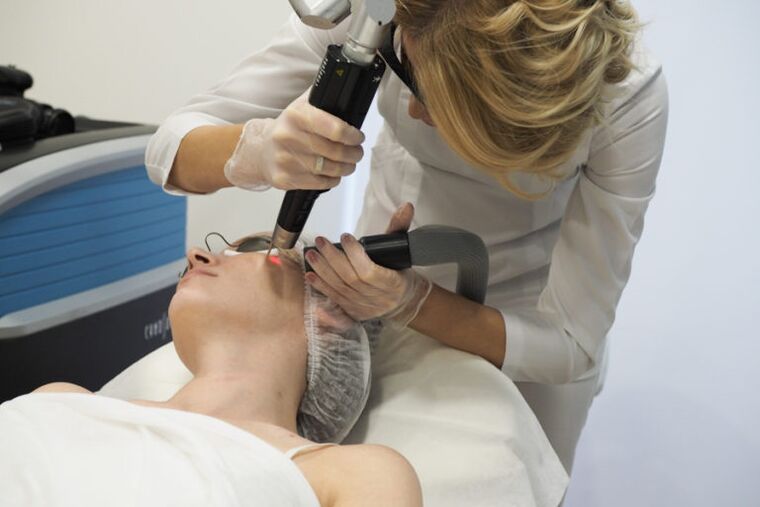Laser rejuvenation is an effective scientifically proven technique. The positive effect of a laser on a specific target molecule has been scientifically proven and tested many times.
Laser rejuvenation is a procedure that is surrounded by many myths. Some say it's great for dealing with lots of blemishes while others are skeptical that it isn't. In addition, it is not a fact that one or the other has actually undergone a laser, nor is it an IPL procedure. So what is it really? Does laser rejuvenation help or not?
Rejuvenation, what can a laser do?
Laser treatments are the effect of such light radiation on the skin that is only absorbed by certain molecules. That:
- intracellular and extracellular water - for a CO2 laser;
- Oxyhemoglobin, Collagen, and Elastin Proteins - for Neodymium Lasers;
- Hemoglobin and melanin - for dye lasers;
- Melanin - for diode and alexandrite lasers.
By absorbing light, the desired molecule converts it into heat and decomposes under its influence. This traps the same reaction in the skin that occurs with injury and begins to build on the missing elements. New cells, new proteins of the 3D structure of the skin are synthesized - the skin tissue is tightened, smoothed and shines with a new shine.
When the laser beams are beams with a spacing between the beams (fractional techniques), microdepression occurs in the skin. The tissue tries to join the edges of these grooves - thus reducing the area of scars and stretch marks. And when the cells with the melanin pigment (the accumulations of which lead to the appearance of age spots) are heated, the natural dye is excreted through the lymphatic system.
The effect described is typical for every type of laser. But here the rejuvenation only ends with the CO2 laser. Neodymium and dye lasers can also remove all visible vessels: rosacea, dilated veins, wine stains, spider veins.
Will there be no effect?
Laser rejuvenation is a scientifically based technique that can only have an effect. Let's explain: every laser target is in our skin. We make collagen and elastin, otherwise the skin might not be on the surface, but would slide down. We also have hemoglobin with oxyhemoglobin in our vessels - how else would the skin be nourished. Maybe, maybe, not having melanin - but that's only the case with people with albinism.
The effect of a laser on a specific target has been scientifically proven and tested many times. This is not a blind introduction to the drug - it just focuses on outward signs of hyaluronic acid or collagen deficiency. This is a deliberate introduction of aseptic (non-microbial) inflammation into the skin, the answer to which is always the same: the production of its new elements.
Does Laser Rejuvenation Hurt?
Not always. If the procedure is performed with a CO2 laser, which vaporizes the skin crevices, anesthesia is required - up to and including general anesthesia. If you resort to rejuvenation with a neodymium laser, the procedure is almost painless because it does not damage the epidermis and sends pulses into the microvessels rather than near the nerve endings.

If you undergo the procedure with a picosecond alexandrite laser, which sends pulses under the skin 100 times shorter than other devices, you will be in no pain at all. Why? The fact is that with such a short pulse duration there is no warming - namely, the cause of pain.
How then does the rejuvenation take place? Pulses of several picoseconds have a mechanical effect (micro-explosion of skin framework proteins). This triggers the formation of certain substances - cytokines, which carry information from one cell to another. They support the skin remodeling processes over the long term.


























